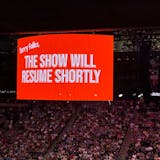Struggles by HealthPartners to get a COVID-19 crowdsourcing app in broad use reflect the difficulties of using mobile device technology to trace the course of the pandemic across the U.S.
The Bloomington-based health system launched SafeDistance on April 17, relying largely on users to input information that could indicate the risk levels of COVID-19 down to the neighborhood. And it has worked, too, with users anonymously reporting when they have respiratory symptoms, and the app then identifying their neighborhoods as risk zones for others.
"With this crowdsourced data, you can … get ahead and be more predictive of where things are going to develop," said Brian Krohn, a developer at Modern Logic, which created SafeDistance.
Uptake suffered, though, when HealthPartners was denied permission to offer the app on Google's Play Store for Android phones. Google required approval of the app by the Minnesota Department of Health, which had concerns that it would create false security for people who weren't in high-risk zones, said Dr. Bjorn Westgard, an ER physician and population health researcher at HealthPartners Institute.
Everything from privacy concerns to competition to technological issues have slowed the adoption of mobile COVID-19 tracking technology in the U.S., despite studies showing that it helped identify more cases of the infectious disease in China and other Asian countries, and its more recent adoption by Democratic nations in Europe. Minnesota officials are just starting to consider this method of tracking.
Technology as a result has done little to support the person-intensive process of contact tracing, by which health officials identify the immediate contacts of people with COVID-19 who might have been exposed to the virus.
The Minnesota Department of Health has a network of hundreds of contact tracers, including county workers and volunteers from health insurance companies, to conduct these investigations and try to identify people who need to be quarantined due to their exposures to the virus.
Nationally, the U.S. Centers for Disease Control and Prevention has called for 100,000 contact tracers, more than triple the current supply.
